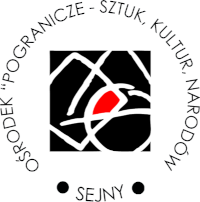For, as before, here everything that is creative takes place within the territory of the borderland. The lecture of Łukasz Galusek, which was focused on the concept of space, sent us back to what had been covered during the previous days of the Dilemma Summer School. The idea of Dilemma, a mobile academy which should not be an island or a fragment separated from reality, is also an architectural challenge for both theory and practice. In this context, inspiration is found in the history of human space which, however precise, has become separate from the material reality and has been filled with myth, imagination and symbols. The Berlin Wall, which was real, also created an invisible curtain and separated imagination into two. The city, which is the very heart of architectural thought, makes it possible to build new societies and arrange utopias: ''Every city is the new beginning of the world” (Mircea Eliade). But space becomes soaked with time very fast, dreams change, buildings fall apart and the worlds, crushed by wars and bombings, become demolished. Here space meets memory, activating other meanings either telling its tales on its own or needing organization and concentration which make it possible for some worlds to live on. For Łukasz Galusek some Central European architects are particularly interesting from this perspective: for example: Jože Plečnik, Bogdan Bogdanović and Edvard Ravnikar. They are behind the ideas, sculptures and buildings in which memory meets the surrounding world and thus becomes organic and sensitive. It is quite often the case that the ideas are surrealist and as the dreamy space is implemented, myth and the energy of time are brought back to life. This gives rise to questions if a proper monument will stop history from moving in circles, how to remember and at the same time go forward and make the world better. But architecture only sparks up questions and makes us search on, building things anew and experiencing space which inspires hope but also fills and overburdens thinking. The architectural reflection was given another perspective when it was juxtaposed with the lecture by Krzysztof Meissner – a famous academic and scholar whose main field is physics. The point of his talk was about the basic dimensions of our reality, but with a different scale and setting of human presence. Coming back to the very beginning of our universe, the first seconds of its time, we observe the movement of the elements and the energy of transformation which drives the expanding cosmos. Physics gives a chance to explain these processes, transferring the accidental into the framework of what is necessary. A scientis faces the world in some wholeness which is a complete and ideal entity and which makes it possible to be understood, purifies too. But here a crack appears – human suffering and a non-material world which is not encompassed by physics. This opens up the path of transcendence. In this context, Krzyszof Czyżewski mentioned Czesław Miłosz's second space and the mystical and spiritual layer of his poetry. The questions which emerge here will not be answered by Krzysztof Meissner who represents physics, because this is the tale which by definition goes beyond natural sciences. Yet, he says that there is no reason why we should think that everything boils down to the rules of physics. Space splits and even though we need to be careful when it comes to its borderlines, one split opens up the gates to another and what is really intriguing happens in the tense energy between these splits.
tekst: Piotr Szroeder
translation: Paweł Rogala
fot. Agata Wasilewska
















